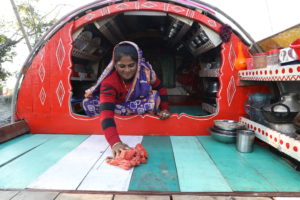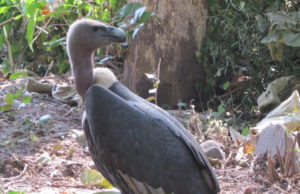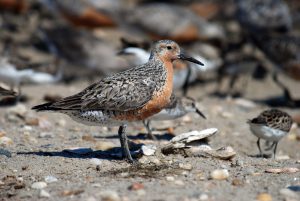Scientists have now established that the rapid melting of ice in the Arctic due to climate change has impacts on the South Asia summer monsoon. This has strengthened the Indian government’s interest to find out more. Scientists in India and Norway have been collaborating closely to study climate impacts, ocean pollution, overfishing and what can be done about these vexed issues. Excerpts from an interview with the Norwegian Ambassador to India, Hans Jacob Frydenlund:
How is the India-Norway cooperation going?
In spite of the pandemic, it is going splendidly. Even in quite adverse circumstances, we had a joint commission meeting in September, the Blue Economy dialogue is continuing, we had a Steering Committee Meeting on marine litter, and I just gave a talk at a FICCI [Federation of Indian Chambers of Commerce and Industry] webinar on the Blue Economy.
I am positive on how things are moving forward on integrated ocean management, with interest on the Indian side of learning from Norwegian experiences in both exploiting and protecting the oceans.
What are the concrete proposals or outcomes on the integrated ocean management plan?
We are building on marine spatial planning, which is important in this context. This is with the Ministry of Earth Sciences, National Centre for Coastal Research, Ministry of Environment and a few other partners. The objective is to contribute towards the Indian government’s goal of exploiting its ocean resources in a sustainable manner.
What will we be able to show the public in Norway and India?
There are four major projects on marine litter going forward, and the integrated ocean management and research initiative has held virtual meetings between different experts from India and Norway, but photo opportunities have not been possible since March 2020. Before that we went down to Mumbai and picked plastic from Versova beach; we went to Ahmedabad where we support projects for water treatment, and there are projects on waste to energy.
Can you expand on these last?
A key component of reducing marine litter is to improve waste handling. We can pick the plastic from the beaches, but you need to do something after picking it. One way is to create energy out of it. You have to burn the waste at very high temperatures to avoid creating more pollution. In Agra and Muzzafarpur we support capacity building of the municipalities in waste management, to reduce litter in rivers, that eventually ends up in the sea. In Gujarat, a research cooperation between Indian and Norwegian researchers on micro plastic pollutants in the rivers gives important information and knowledge, for the public as well as the policymakers.
The pandemic has disrupted plans, as you said, but are our institutions of cooperation robust enough?
Our structures of cooperation are robust and India has invested in research and personnel – and India has wisely sent young researchers to work experience in the Arctic. There is now a critical mass of people in both India and Norway from both countries, with Indians being the largest number of people from outside of Europe coming to Norway for professional reasons.
How has India’s draft Arctic policy been received in the Arctic?
It has been received well, especially because of its clear position on that all activity in the Arctic should be with respect for International Law, and on the centrality of the Arctic Council. The Arctic is a very vulnerable area and it is very important to have an international framework to avoid conflict.
Coming to India it was fascinating to find out how much interest there was in the Arctic. By conducting research in Arctic areas, the Indian government is able to make better predictions of monsoons and how the climate is changing in the Himalayas. This shows how interlinked the world is. The Indian government has invested heavily in this research. Before the pandemic I was able to go to Goa to the National Centre for Polar and Ocean Research. We are proud to be able to host Indian researchers in Norway.
How are China’s policies received with regards to the Arctic? Things like an ecological civilisation?
Both India and China are important actors for the environment and for dealing with climate change, we welcome both of them as observers in the Arctic Council. And we hope they work to preserve the ecological balance in the Arctic.
We welcome China’s stress on ecology without going into the details of the concept of ecological civilisation.
How do you see the return of the US administration to the Paris Agreement and on work on climate change?
This is extremely important, we have been missing the US, not just in dealing with its own emissions but also for a more global approach. We have been cooperating with states like California, but it was not comparable to having the federal government onboard. Now we can get back to the business of dealing with climate change together.
That retreat into nationalism has also been seen in other countries.
There has been a shift of economic power eastward, with China becoming more important, as well as national assertiveness by other countries. There are centrifugal forces in Europe as well. Brexit has had a large impact. Norway had to work out some thousand bilateral agreements with the UK. Just in practical terms that is quite a chore. Much has changed since the last US president, and there needs to be a renewed impetus for global cooperation.
Where does India-Norway cooperation fit into this?
Why do we have an India strategy? Because we will not achieve the Sustainable Development Goals without India. We need to find an ecologically sustainable way forward. India and Norway’s economies are now more interlinked and important for each other than traditional trade figures indicate. We can work well together. Indian R&D is often more focused on cost effectiveness than in developed countries. Indian researchers have to overcome obstacles of infrastructure and low resources. The innovations coming out of India are beneficial for all of us.







![Avalanche rescue training in Chitral [image courtesy: AKAH-P]](https://dialogue.earth/content/uploads/2021/02/Avalanche-rescue-training-Yarkhund-Last-Chitral-300x225.jpg)

